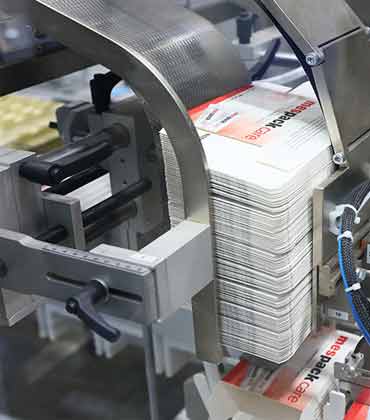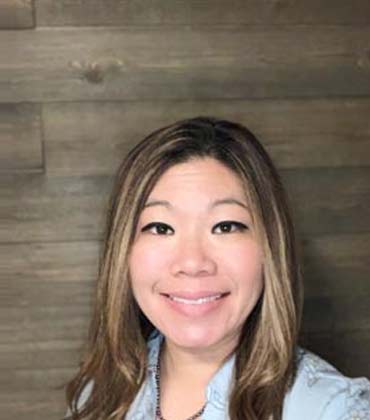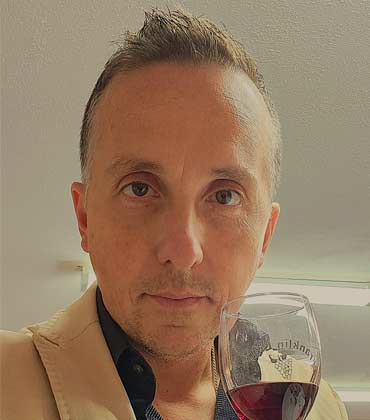THANK YOU FOR SUBSCRIBING
By Arun Ahuja, Senior Vice President & General Manager, Healthcare & Corporate at Transact + CBORD
The Path of Least Resistance: Connecting Hospital Food...
By Jenica Eisenbach, PPG Global Technical Service Director, Packaging Coatings
What's ahead for beverage and food can manufacturing?
By Ciro Pirone, Director of Italian Wines at Horizon Beverage
Looking Ahead to 2024 for Italian Wines in the US

Independent Stave Company Creating New Flavors and Ensuring Sustainability
Andrew Wiehebrink, Spirits Research and Innovation Director, Independent Stave Company

 Andrew Wiehebrink, Spirits Research and Innovation Director, Independent Stave Company
Andrew Wiehebrink, Spirits Research and Innovation Director, Independent Stave CompanyAndrew Wiehebrink is the Spirits Research and Innovation Director at Independent Stave Company. Originally from an engineering background, Wiehebrink leverages his engineering experience in research and innovation to create new flavors in the spirits industry. He monitors over 3,000 experimental barrels worldwide and is well-versed in developing American Whiskey, Scotch Whiskey, Irish Whiskey, and other non-barrel-aged products. In an exclusive interview with Wine Consulting 2023, Andrew Wiehebrink shared his valuable insights on alcohol maturation and flavoring.
Could you give me an overview of yourself, your journey, and your current roles and responsibilities?
I have a degree in mechanical engineering, and after college, I professionally pursued engineering for around six years. Bourbon and Whiskey are a huge part of Kentucky’s food industry and influence many other industries, including manufacturing. Through some projects I was involved with and managed, I formally got introduced to the bourbon industry and decided to switch to this industry. I moved from engineering to the Independent Stave Company and started my career in the barrel business. The company’s primary business is spirit barrels; within that category, the most significant is bourbon barrels. The company was looking for somebody with an engineering degree who could bring creativity into the field. I checked all those boxes and started at the Independent Stave Company seven years ago.
What are some of the challenges that are present in the marketplace today?
The biggest challenge for a barrel maker in the industry is keeping up with the demand. Bourbon has never been the end; it has gone through iterative improvements, and the current cycle includes many distilleries and rapid expansions.
The organization’s main challenge is ensuring that we’re doing sustainable, ethical, and efficient things. Within the research division, we are bound by tradition, and multiple laws are federally regulated; we need to learn to innovate within those bounds.
What are some of the technological advancements that have positively impacted the industry?
The technological advancements are centered around being efficient with the wood products we use while expanding as an organization; learning to utilize all three components that have been cut down, and sustainably reusing byproducts from the manufacturing process. For instance, all of our machinery is designed to save wood in mind.
"Our goal is to deliver the products and flavors our customers want, and that keeps us going in the research division"
In the research division, we don’t have many technological advancements but research to understand better the concept of maturation and new barrel idea designs. We can introduce small things that make big differences. The advances in my division are predominantly in understanding the chemistry of wood and the processes involved in manufacturing.
How are the green initiatives sweeping across different verticals impacting the barrel industry?
The green initiatives have positively influenced the barrel industry, specifically in our company. For a couple of years now, we have employed a person exclusively to ensure sustainability and are partnering with like-minded companies with similar initiatives.
We have been collaborating with the White Oak Initiative to ascertain the sources we utilize are harvested ethically and sustainably, which has enabled us to be more eco-friendly in the past decade.
With an increasing focus on environmental concerns, we are challenged to be better at our jobs. Through those challenges, we have adopted green initiatives and, ultimately, give back in the best way possible.
What does your leadership strategy encompass, and how do you implement the same impactfully?
My job is to test the limits of possibilities regarding alcohol flavors, which goes back to the research division. It is focused on the development of alternative flavors. We’re exploring species other than oak and are looking at barrel alternatives.
Within the barrel industry, there has been a lot of evolution concerning flavor; before the early 2000s, there wasn’t much. We are treading new ground, which makes the job exciting.
We aim to deliver the products and flavors our customers want, which keeps us going in the research division.
To improve the division, we take cues from the customers we serve. If our customers ask for a specific product that we do not possess, we figure out how we best create it. If they require a higher quality product, we leverage new machinery to provide that and see what we can do.
What are some of the disruptions that might take place in the industry in the coming years?
Bourbon is very popular, and an increasing number of competitors are entering the market every week, and customers are always looking to differentiate themselves. When it comes to making spirits, there are many ways to achieve that uniqueness: distillation, raw materials, and maturation. Those are the three sectors players can use to distinguish themselves. As the barrel industry provides 60 to 80 percent of the flavor, they rely on us to develop different ways to offer that differentiation.
Differentiating is the key to standing out; we are a massive part of creating options to provide that distinction.
Is there any advice you'd like to share with your peers in the same space as yourself?
Don’t hesitate to think outside the box and try new things from the beginning. Disregard the barriers and focus on getting a product sample to the end user first; a manufacturing process can be set up accordingly. It’s going to require a lot of trial and error.
Read Also














